When Christopher Columbus first landed on the Caribbean island of Hispaniola (what is now Haiti and the Dominican Republic) in December of 1492, it set into motion events which would culminate in the Spanish “conquest” of much of the Americas over the subsequent centuries. Within 150 years, as much as 80% of the Indigenous populations of the regions colonized by Spain had died, victims primarily of rampant disease, as well as colonial violence, forced labor, and slavery.
Prior to the arrival of the Spanish conquistadors on their shores, however, the peoples of Mesoamerica enjoyed vibrant cultures. The region is widely considered to be one of the “cradles of civilization,” where ancient civilizations arose independently, including one of only a handful of regions in the world where written language developed.
Throughout Mesoamerica, this writing took the form of what we now typically call “codices,” a name given in the 19th century to pre-Columbian pictorial manuscripts often made from either paper or animal hide, frequently in long, narrow strips. These are not codices in the strict sense of the word, as a codex is “an ancient book, consisting of one or more quires of sheets of papyrus or parchment folded together to form a group of leaves, or pages” and sewn along one side.
Though the Mesoamerican codices do not fit this strict definition, the term was nonetheless popularized by scholars such as Donald Robertson and John B. Glass, who first proposed a comprehensive study of these documents, to describe a range of both pre-Columbian and post-contact manuscripts made in the Mesoamerican pictorial tradition. These are variously divided by style, by region, by culture, and by subject matter.
Unfortunately, the Spanish colonization of Mesoamerica led to the destruction of the vast majority of pre-Columbian codices, such that as few as 20 or so are said to survive to the present day. However, Robertson and Glass catalogued more than one thousand items that fit the broader criteria, including post-contact codices, paintings and maps made under the Relaciones Geograficas during the reign of Phillip II, legal documents from the 17th century, and pictorial catechisms.
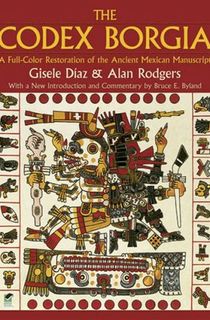
The Codex Borgia
Widely considered one of the most important primary sources for the study of pre-Columbian religion and culture, the original copy of the document known as the Codex Borgia is housed in the Vatican Library, where it was acquired as part of the collection of 18th century Italian cardinal Stefano Borgia, for whom it is named.
The document itself, however, predates Borgia, and may trace its history back as far as the 15th century, where it was probably created somewhere in the central highlands of Mexico. This painstaking reproduction of the original document makes the pages of the original Codex Borgia widely available to the public for the first time, bringing this incredible piece of history to vivid new life.
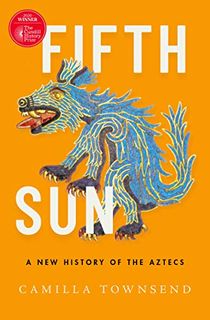
Fifth Sun: A New History of the Aztecs
Most histories of Mesoamerica have been written by the Spanish invaders—but the Indigenous peoples of Mesoamerica had writing of their own, and also adopted the Roman alphabet used by the new arrivals. In this “landmark masterpiece” (Foreign Affairs), Camilla Townsend tells the story of the Aztecs not from the records left by the Spanish, but drawing almost entirely from records created by the people themselves, recording the details of their lives as they lived them, creating “the best book on the Aztecs yet written, full stop” (History Today).
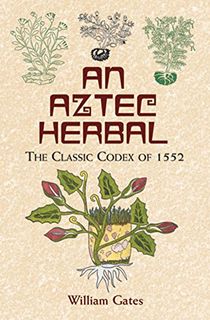
An Aztec Herbal: The Classic Codex of 1552 (Native American)
Originally written in 1552, this classic codex is “the real deal” (Texas Kitchen and Garden and More), arguably the earliest surviving medical and herbal text compiled in Mesoamerica. Besides a variety of ancient herbal remedies for everything from hair loss to hiccups, this one-of-a-kind book provides a naturalist’s treasure-trove of early botany, complete with more than 38 full-color illustrations of plants and other elements, as well as new material compiled for this edition featuring an introduction to the Mexican botanical system, an index of the plants mentioned in the book, and a new introduction by anthropologist Bruce Byland.

The Broken Spears: The Aztec Account of the Conquest of Mexico
Like Fifth Sun elsewhere on this list, Miguel Leon-Portilla’s classic The Broken Spears is an attempt to retell the conflict between the Spaniards and the Aztecs from the Aztec point of view, using documents ranging from as close to primary accounts as possible to more recent stories from Aztec descendants. Leon-Portilla’s “moving and powerful” account is a “unique reading experience which should not be missed by any reader interested in history” (Los Angeles Times), offering a unique look at a culture and a conflict that shaped much of North American history.
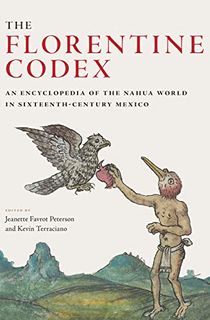
The Florentine Codex: An Encyclopedia of the Nahua World in Sixteenth-Century Mexico
Between 1575 and 1577, a Franciscan friar by the name of Bernardino de Sahagun and a team of Indigenous scribes and painters completed work on a decades-long project known as the General History of the Things of New Spain. This massive, three-volume work later became known as the Florentine Codex, a unique example of cultural exchange that is housed in the Biblioteca Medicea Laurenziana in Florence.
Besides copious illustrations, the text is written in both original Nahuatl and translated Spanish, and this newly-edited reproduction adds in the voices of experts from multiple disciplines who examine this landmark codex and explicate it for modern readers.
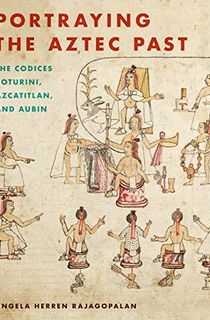
Portraying the Aztec Past
Three major surviving codices which date from the last days of the Aztec empire, the codices known as Boturini, Azcatitlan, and Aubin, all tell the history of the Mexican peoples from their migration from Aztlan through the fall of the Aztec empire. By examining these three distinctive yet linked documents, professor of art history Angela Herren Rajagopalan provides a “very clear and convincing interpretation” (The Historian) that explores not only these fascinating texts themselves but how culture and identity are perceived, presented, and altered by contact with colonizing forces.
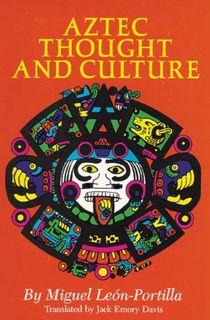
Aztec Thought and Culture
Drawing from more than 90 original texts, including a handful of surviving codices created before the arrival of Columbus, this radical history of the thoughts, ideas, and culture of the people commonly called Aztecs showcases everything from ideas of philosophy and religion to everyday practices. Besides pictorial codices, Indigenous scribes created thousands of folios in their own native language using an adapted Roman alphabet as taught to them by missionaries, with which they recorded poems, sagas, and much more, which are translated for a modern, English-speaking reader in this one-of-a-kind exploration of Mesoamerican thought and culture.






